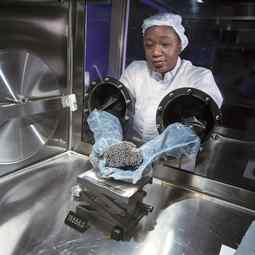 The 17in iMac on display at Macworld 2002 in New York.
The 17in iMac on display at Macworld 2002 in New York.
(Photograph by Mario Tama/Getty Images)Can you use your iMac's built-in monitor as a second screen for another computer? The answer is yes. Here's how.
Q:
My iMac has a built-in monitor. Is there a way of using this as a second screen for another computer?
A:
When it comes to screen space, you can never go overboard. Large monitor and multiscreen set-ups make it easy to multitask, and have been shown by a number of studies to boost productivity. It’s a shame, then, that Apple doesn’t build video input jacks into its iMacs—these all-in-one computers have a built-in monitor, and it’d be nice to be able to use it with other systems. This would be particularly useful for laptop users looking for a way to expand screen space when they aren’t on the road.
But even without an input jack, you can still put an iMac to work as an external monitor for another computer. You’ll need a program called ScreenRecycler, which employs what is called the VNC, or Virtual Network Computing, protocol. VNC is usually used as a way to allow one computer to remotely access and control another, but ScreenRecycler uses it to turn the second computer into an adjunct monitor. Note, though, that while the second screen can come from any type of computer (even a laptop), the computer you’re working on has to be a Mac.
Read more ....
 Candy Coated: A new treatment targets “lollipop” molecules on the flu’s surface. Russell Kightley/Photo Researchers
Candy Coated: A new treatment targets “lollipop” molecules on the flu’s surface. Russell Kightley/Photo Researchers 














































